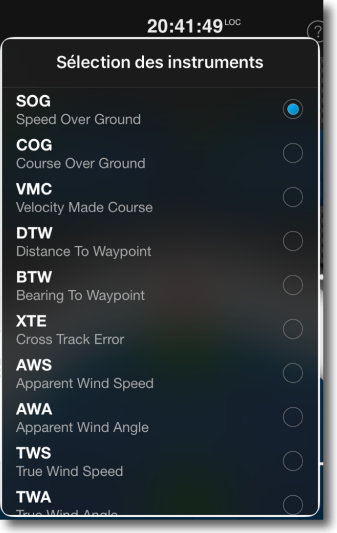 Navigation apps are full of acronyms. This coded and abstruse language was originally developed for electronic navigation instruments, GPS mapping and other chartplotters. These acronyms, in the form of three letters most often, are the contraction of terms defining specific navigation data and according functions. This facilitates on-screen display taking few space. If some of these acronyms are relatively well assimilated by the boater, as SOG for Speed Over Ground (speed over the bottom), you can quickly access subtleties that are not always mastered as COG for Course Over Ground, meaning "route runned on the ground", that the word "Course" in English can mean "Route" or "Heading" according to the context.
Navigation apps are full of acronyms. This coded and abstruse language was originally developed for electronic navigation instruments, GPS mapping and other chartplotters. These acronyms, in the form of three letters most often, are the contraction of terms defining specific navigation data and according functions. This facilitates on-screen display taking few space. If some of these acronyms are relatively well assimilated by the boater, as SOG for Speed Over Ground (speed over the bottom), you can quickly access subtleties that are not always mastered as COG for Course Over Ground, meaning "route runned on the ground", that the word "Course" in English can mean "Route" or "Heading" according to the context.
COG is the angle between the course of the ship relative to Geographic North (or true north), not to be confused with HDG for Heading (compass head) which can be either a Magnetic Heading HDM, angle counted relative to the Magnetic North, or HDT for Heading True, angle counted relative to Geographic North. It's quick to get lost…
But it is sometimes complicated until migraine headache with a well known acronym by sailors : VMG, and another less well known : VMC. Two data that are generally the delight of boater's forums, have a look.
VMG (Velocity Made Good)
The VMG represents the best upwind speed, with the best angle between the course through water and the true wind. This is the "helpful speed", or the “windward gain”. If too close to the wind, the speed decreases and drift increases, if bear away, the drift decreases, speed increases, but the route get longer. VMG Max is achieved by the best compromise between these two options, called OTA (Optimum Tack Angle) is the optimum leg angle.
This applies both to upwind and downwind (particularly for multihulls).
VMC (Velocity Made on Course)
VMC represents the best closing speed (SOG) a mark to join, with the best angle between the course over ground (COG) and Bearing (BRG) of that mark to join (waypoint or race mark). This is the "progression speed" or the "gain on the route". The VMC is directly related to VMG resulting from boat driving, but also to the presence of current that can change the angle between course through water and course over ground (as in the illustration below).
Remarks :
- VMG and VMC will be equal if the mark to join upwind (or downwind) is in the axis of the real wind, which is rarely strictly the case.
- The drift (¹) due to wind will have a different impact depending on whether one steers upwind or downwind. Upwind it will be negative for VMG as it will increase the upwind angle, it may instead be positive at some angles downwind as it may decrease the downwind angle.
- The current direction and velocity (¹) have a significant impact on the VMC as, whatever the VMG, the current can, according to its direction, separate or bring the boat closer to the mark to join, and depending on its speed increase or decrease the VMC.
XTE (Cross Track Error) and TAE (Track Angle error)
The Cross Track Error (XTE) represents the distance the boat is off the line linking the starting point (mark or previous waypoint) and the point of arrival (mark to join or active waypoint), perpendicular to this line. This distance is expressed in meters and nautical miles, depending on the device. The Track Angle Error (TAE) is measured between the bearing of the mark to join (BRG) and the road on the bottom (COG).
Hoping to have enlight some of you, you can also complete this short presentation by referring to the article published in January 2009 by Olivier Chapuis on his blog (²).
–––
(¹) Regarding the effects of drift and current, also read : Man Over Board.
(²) VMG ? VMC !
–––

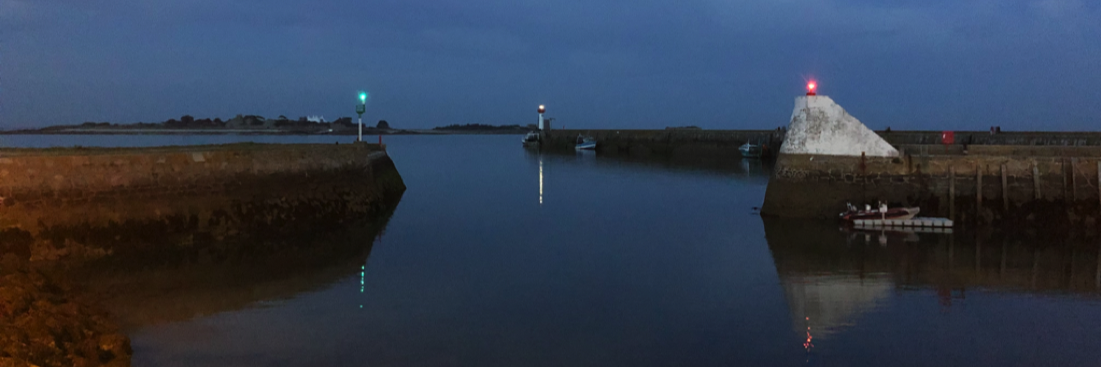
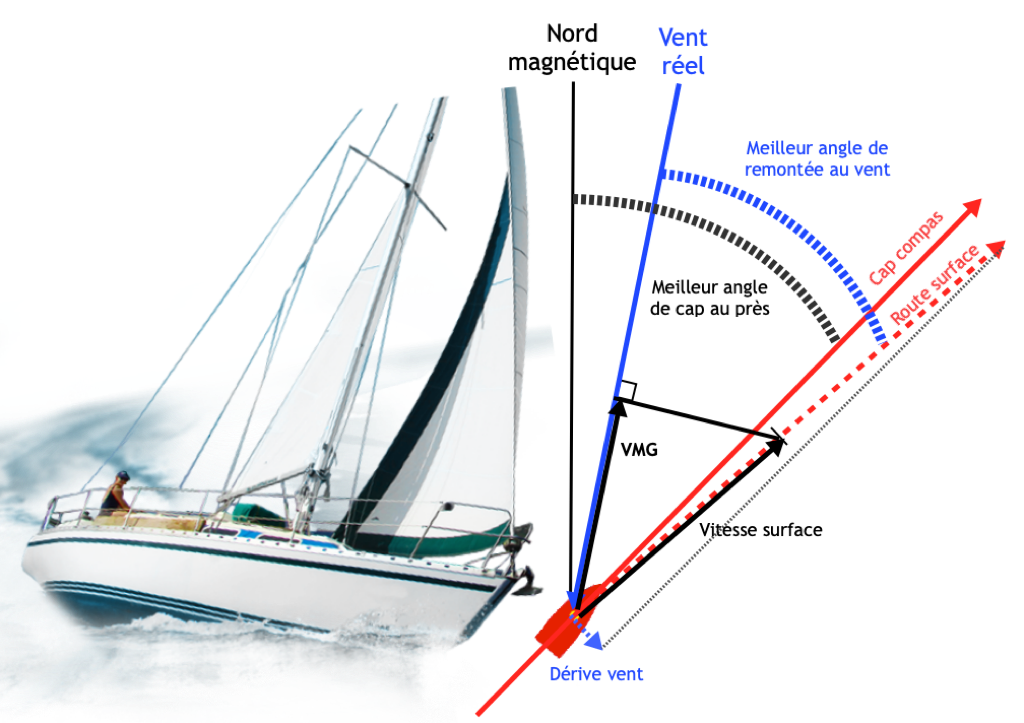
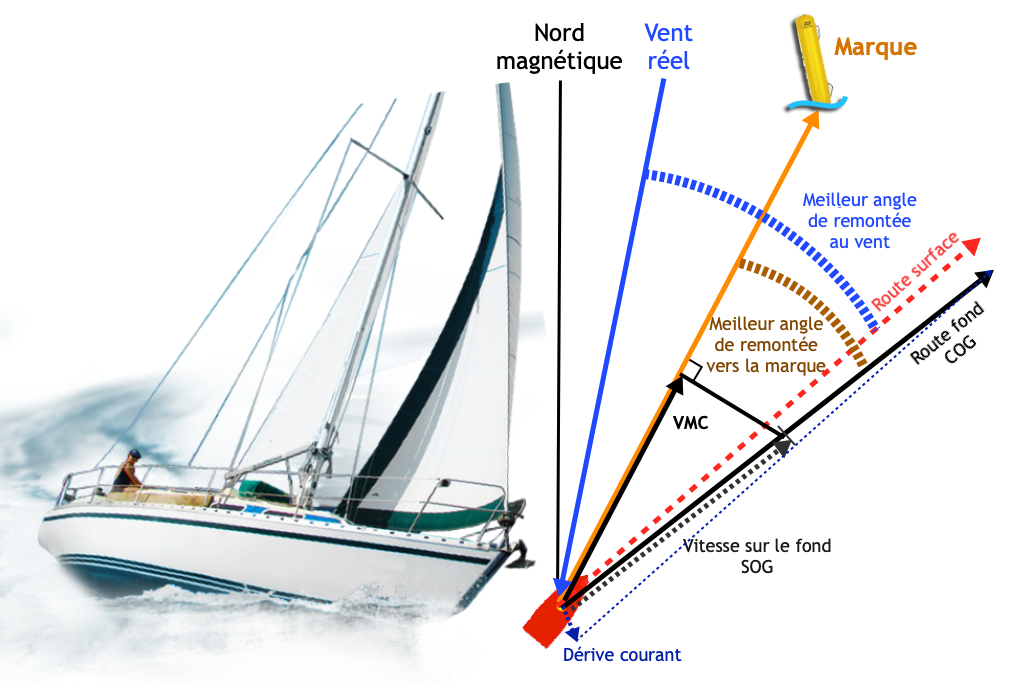
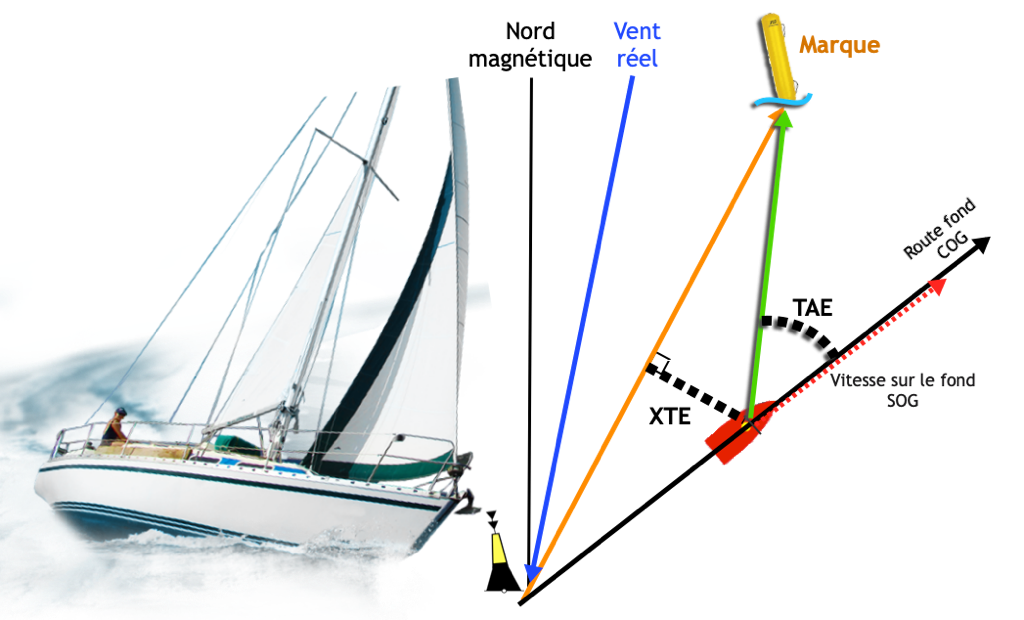
Following a semantic exchange with an avid reader, there appears a subtlety in the notion of VMG which is not found in VMC. Velocity “Made Good” literally means “the right” speed, which makes me write “the best speed”, because a priori we cannot go faster in relation to the wind axis than the VMG. In other words, there is no difference between “the good” and “the best”. This implies that the notion of “VMG Max” is a pleonasm, because if we go slower than the VMG, this becomes a Velocity Made “Not Good”.
On the other hand, the VMC can vary depending on the factors stated (driving the boat, wind variations, Current) which allows the ETA to be calculated in real time (Estimated Time of Arrival) et le TTG (Time To Go) à la marque ou au waypoint actif.
But, of course, cette interprétation peut être sujette à discussion !
Quand je vous disais que ces acronymes font le bonheur des forums 😉
Bonjour,
Un grand merci pour ce superbe article.
Je me permets de mettre sa référence sur le compte Facebook de mon club de voile.
Kind regards.
J.P.
Perfecto!
Gracias
Clair, concis,pédagogique tjrs bien Francis
Bel article, propre clair concis : merci.
Et du coup…. j’aurai été tenté de (re-)demander «Va-t-on voir prochainement arriver OTA , VMG Max , et TAE dans Weather 4D Nav & Routing ?» 😉 . (j’ai bien compris la réponse que vous m’aviez donné, mais sait-on jamais si ça change … 🙂 )